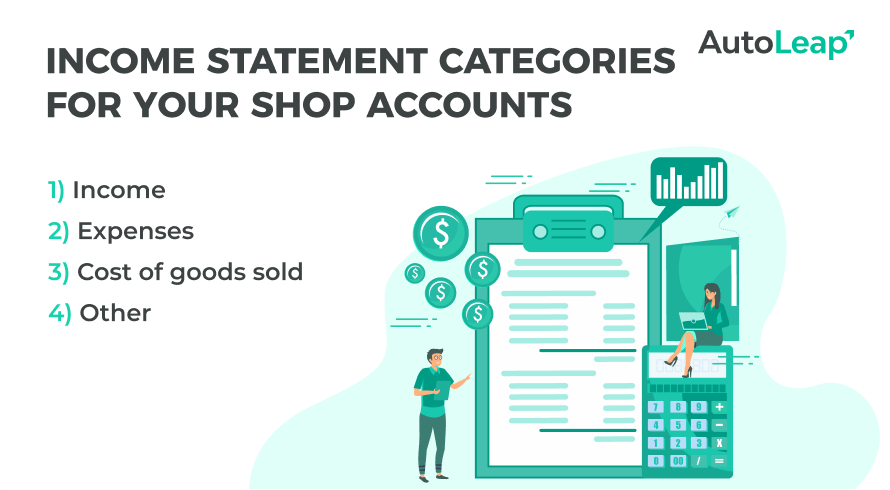Investopedia defines a chart of accounts as “an index of all the financial accounts in the general ledger of a company.” In short, this system helps your shop categorize its finances!
With better organization, you can make smarter business decisions and run a more profitable shop.
In this blog post, we run through a sample chart of accounts for your automotive repair shop. You will learn how to categorize:
- Income statements
- Balance sheets
- Equity
- Expenses
- And much more
But first, let’s consider the benefits of using this system.
Why your shop should use a chart of accounts
A chart of accounts has many advantages for your auto repair shop. Here are some of the key benefits:
- Organized finances: Eliminate clutter with your financial paperwork. Install an organized process like a chart of accounts to improve your shop’s operations. Pair this with an auto repair shop POS system to improve your shop’s financial reporting and optimize your business operations.
- Increased shop efficiency: A defined system for organizing your shop finances will mean less time spent on manual paperwork and number-crunching.
- Smarter business decisions: With organized accounting, you will gain a clear picture of how the shop needs to allocate its budget and resources moving forward.
» Want more strategies to manage your shop’s profits and cash flows? Click here to read our blog post.
You understand the advantages. Now it’s time to learn about a chart of accounts and what to include.
How to categorize your chart of accounts
Income Statements
An income statement includes the money you bring in (income) and the money your business spends (expenses). These statements clearly show how your shop performed financially over a given period.
Organize your income statement with the following categories:

Let’s break each of these categories down in detail.
Income
Income accounts detail what your shop brings in revenue-wise from services. Those services include:
- Oil changes
- Tire rotations
- Brake repairs
- Engine repairs
- General maintenance
Expenses
Your shop will have plenty of expenses to add in this chart of accounts category. Examples include:

Cost of Goods Sold
Investopedia defines Cost of Goods Sold (COGS) as “the direct costs of producing the goods sold by a company.” For your shop, this applies to the maintenance and repairs you offer. What materials do you need to provide these services? What do you require from a direct labor cost perspective?
Other
For your “Other” chart category, include any incomes or expensesthat you consider outside of the shop’s norm. An income example could include bank interest you’ve accumulated, while an expense accounts example could include potential damages you owe.
Balance Sheets
Like an income statement, balance sheets provide detailed insights into your shop’s financial standing. Assets are the valued resources your shop owns. On the other end, long-term liabilities involve what your shop owes and has the responsibility to pay at some point.
Organize your balance sheet to include the following:
- Assets
- Current: Can consist of cash on hand, accounts receivable, allowances, and inventories
- Fixed: Can consist of shop property (if owned), vehicles, and equipment
- Liabilities
- Current: Includes customer deposits, accounts payable, and payroll taxes
- Fixed: Includes mortgages and loans on projects like shop construction
- Shop owner equity (if applicable)
Equity
Equity determines the true financial value of your business. The equation is simple: subtract your shop’s liabilities from your assets to determine the total equity.
Closing thoughts
A chart of accounts can help you better categorize your finances to run a more organized shop. This detailed breakdown of what to include in your chart of accounts should help you with finances and the accounting process.









